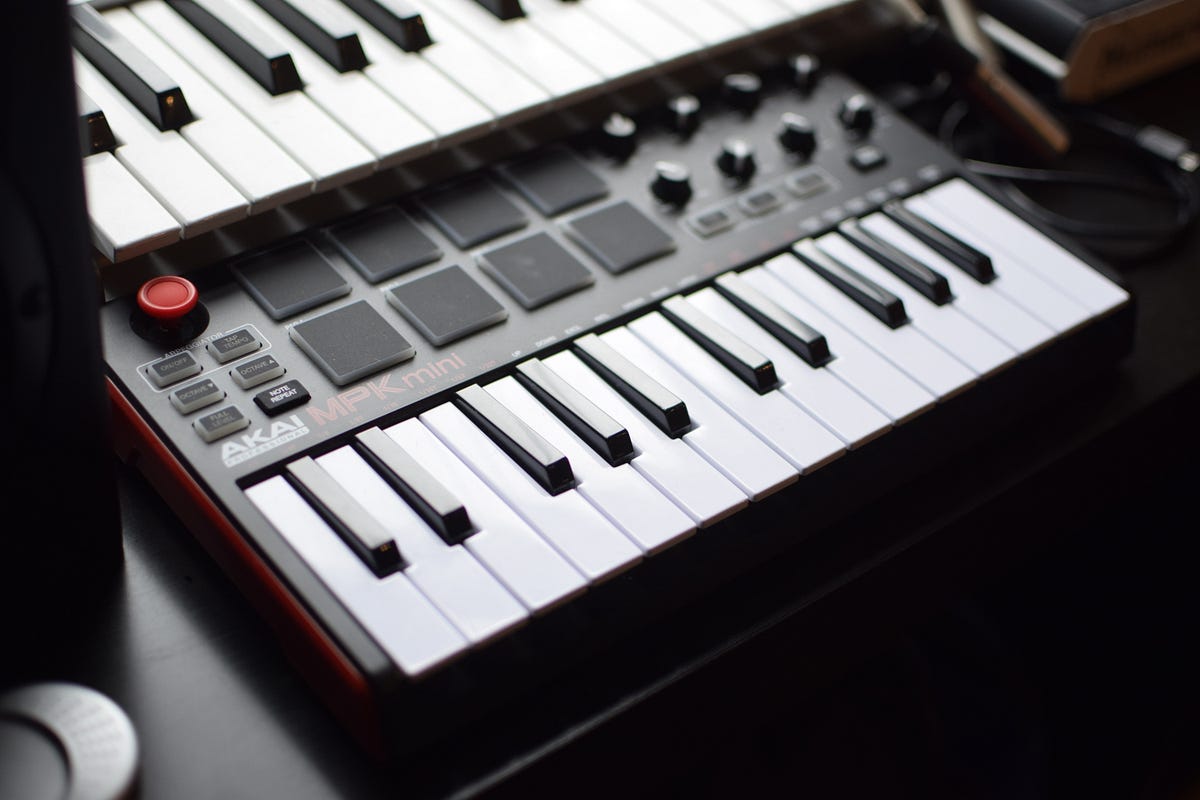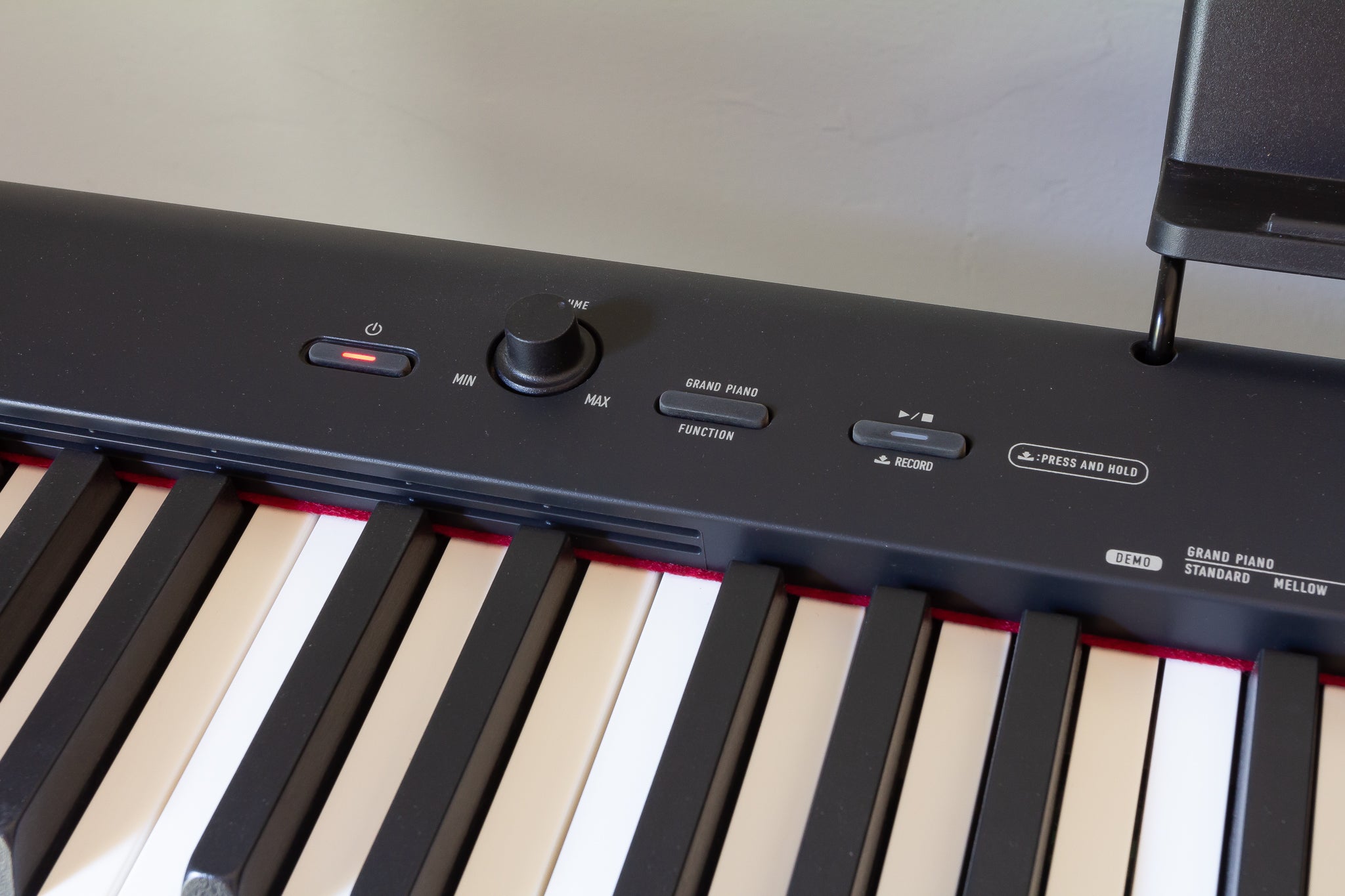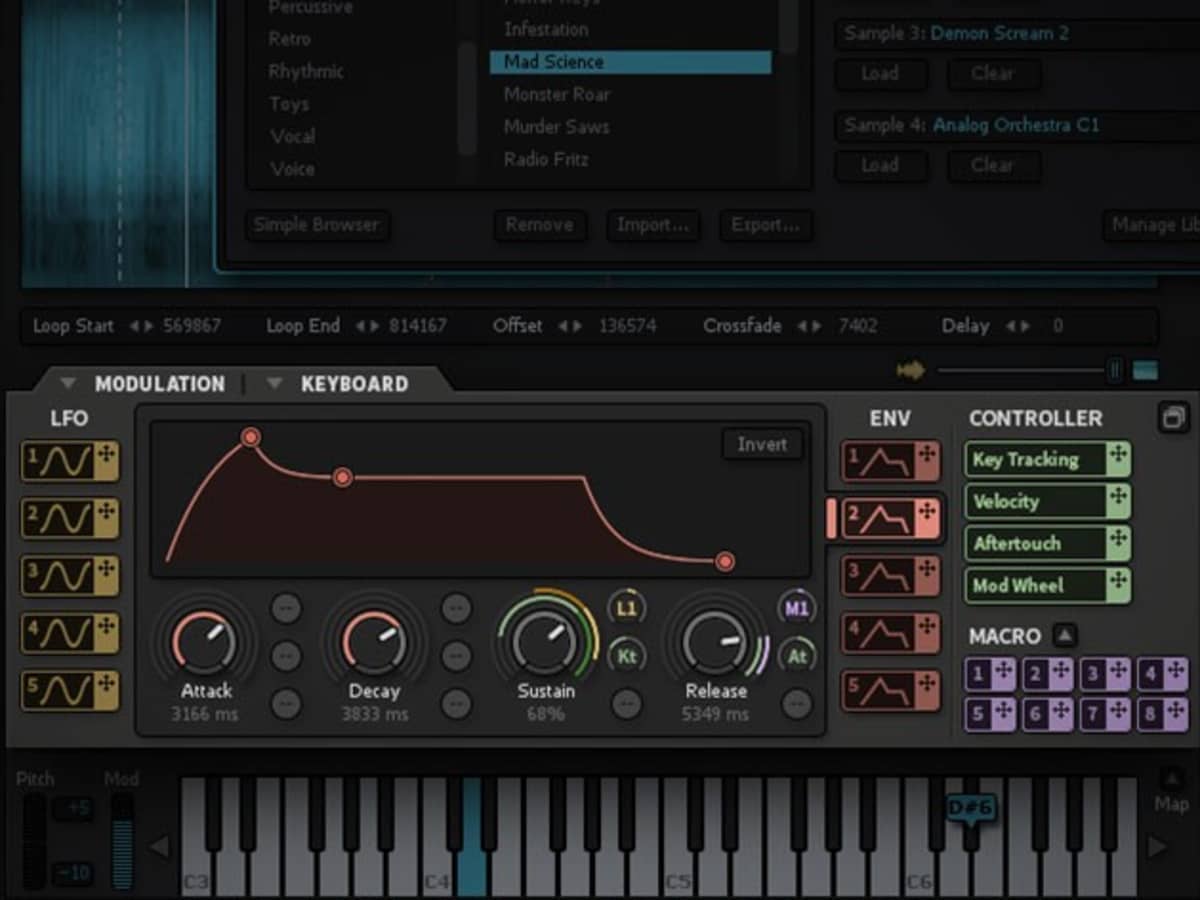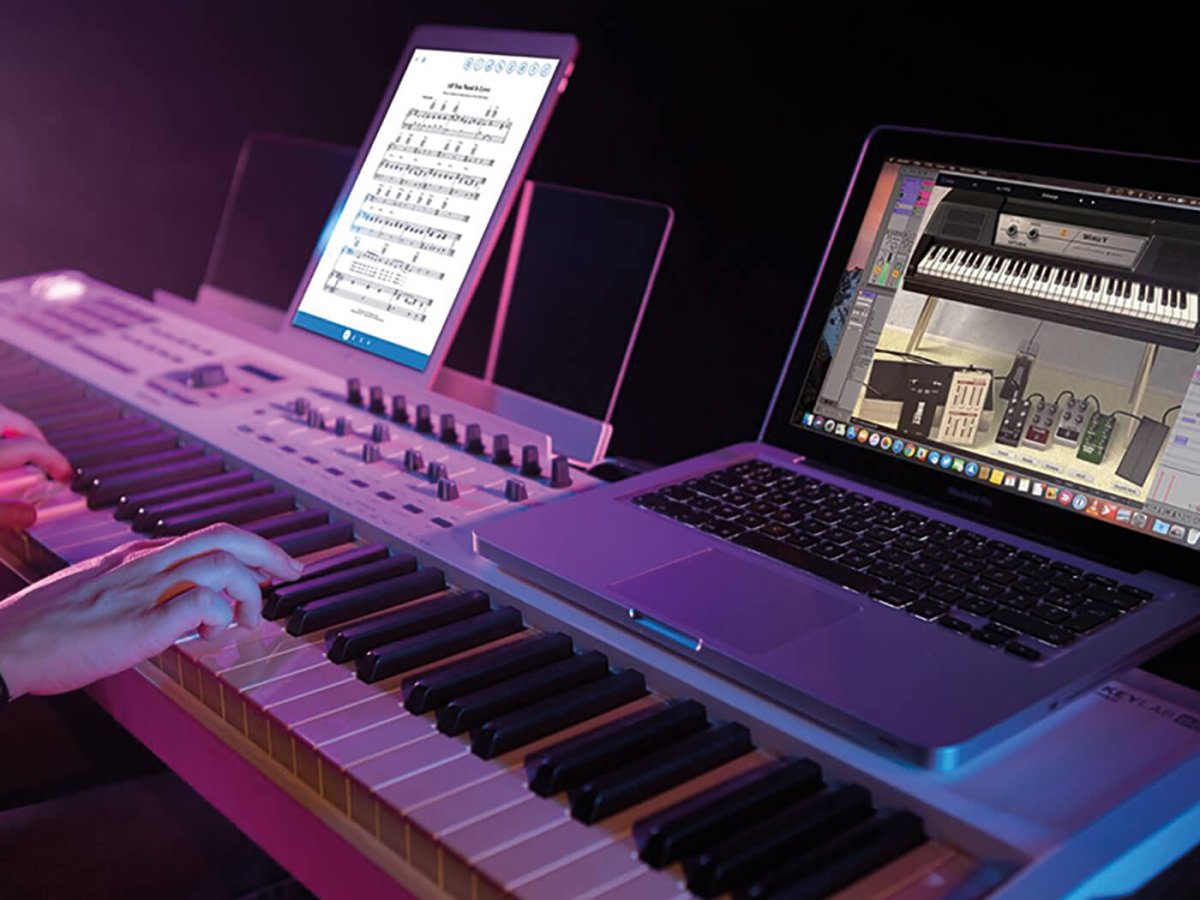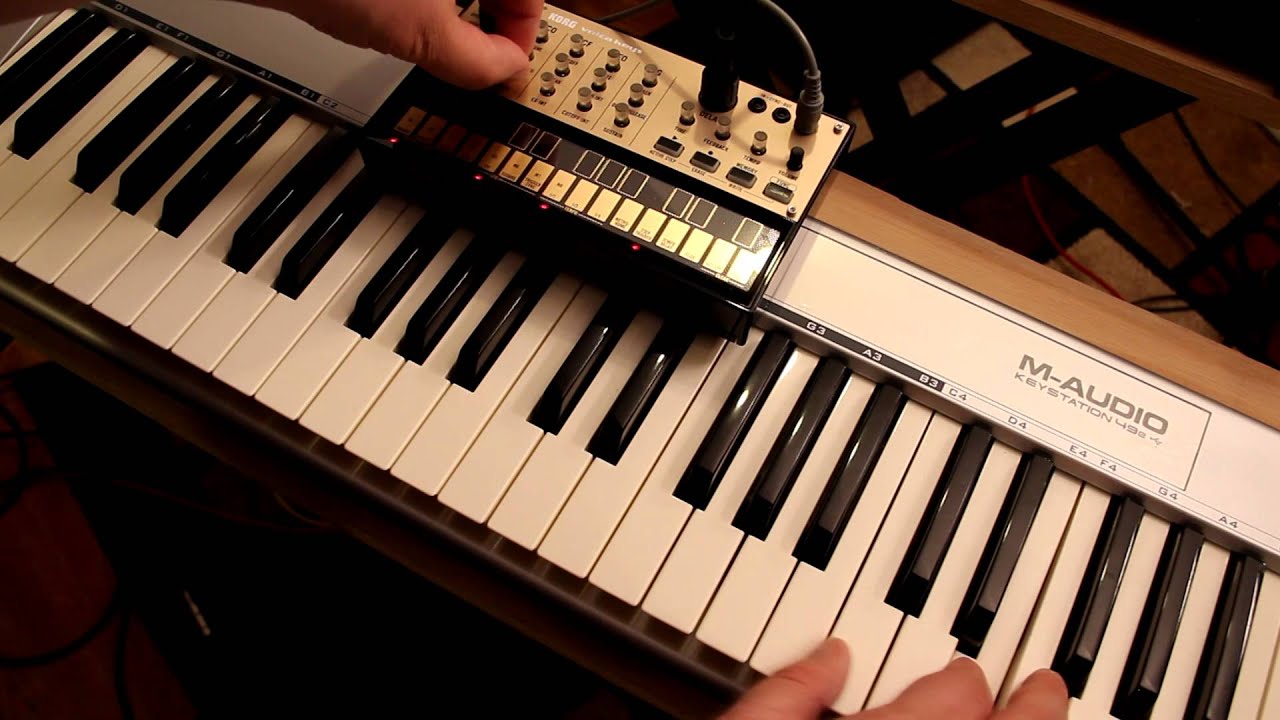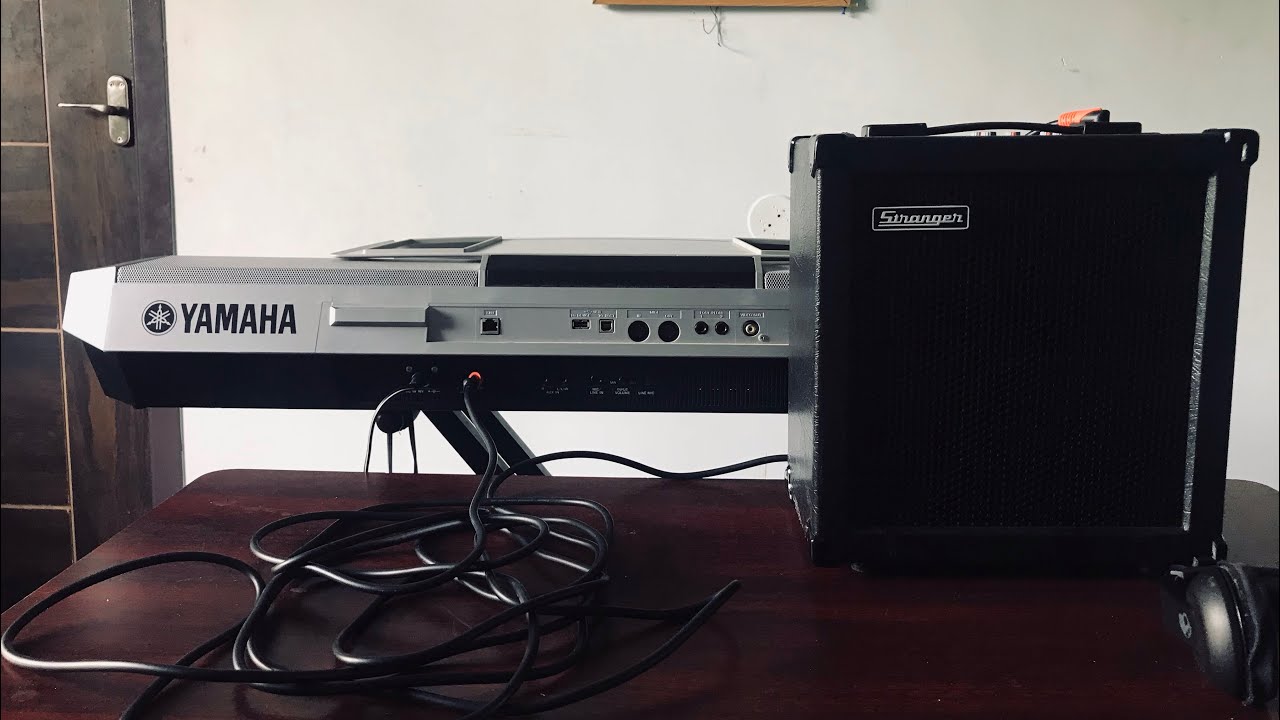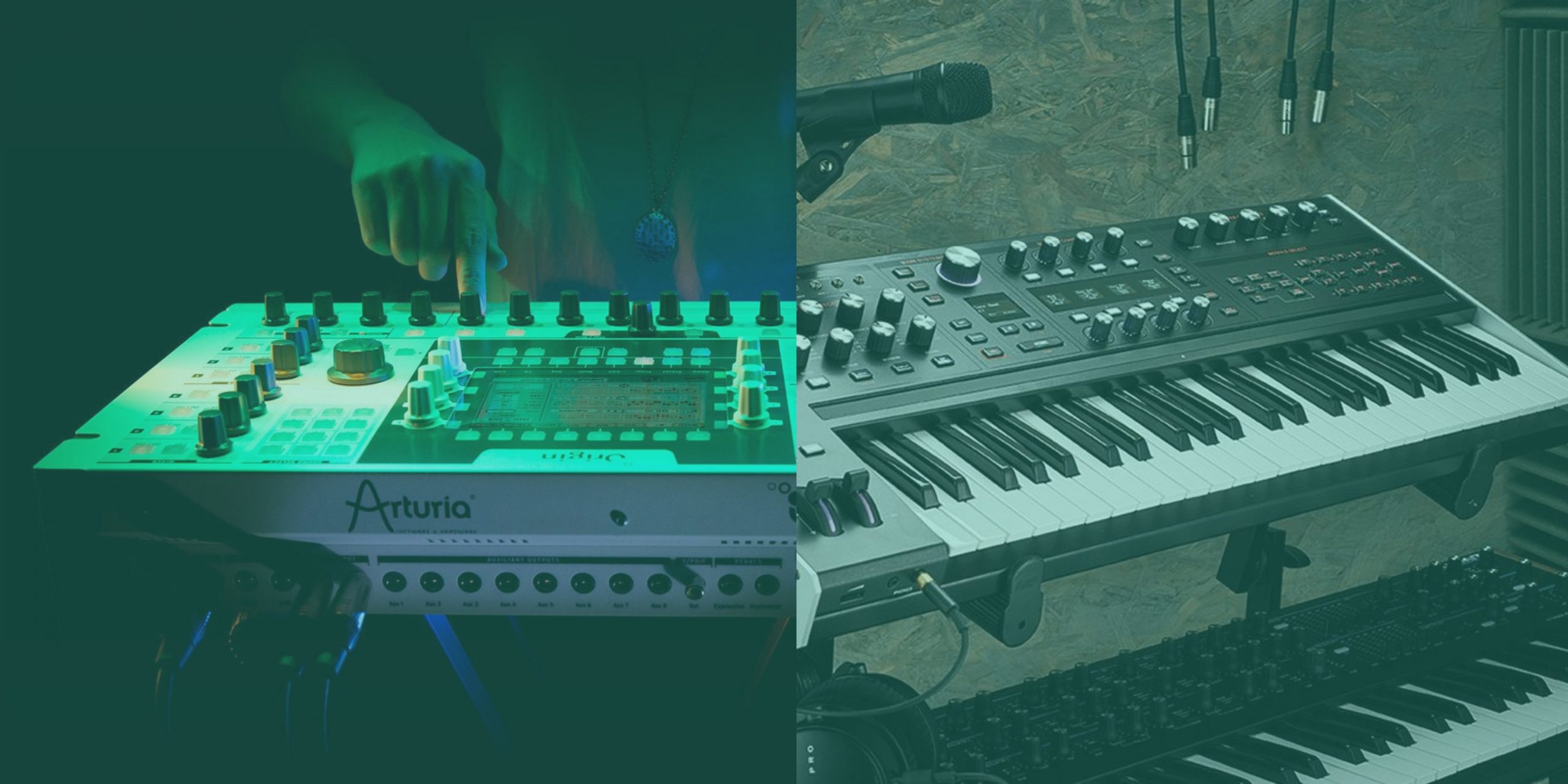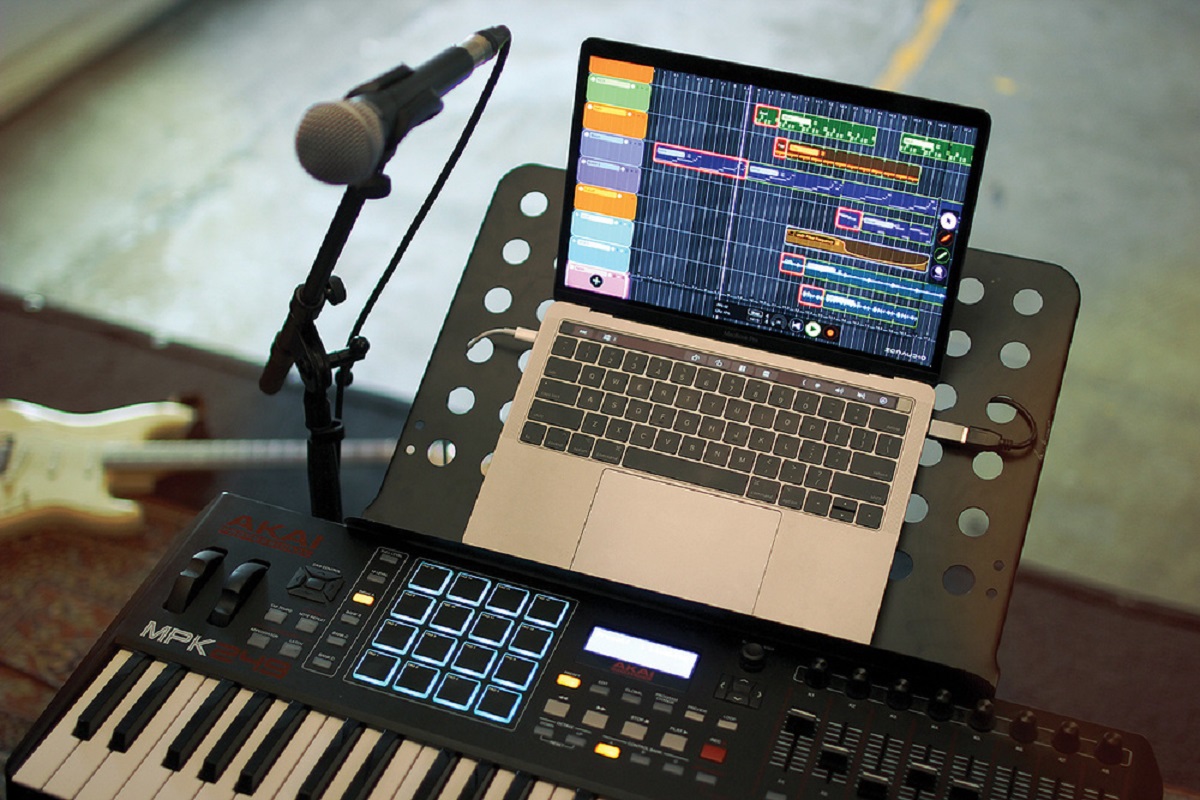Introduction
Creating a soundboard with a MIDI keyboard opens up a world of possibilities for musicians, DJs, podcasters, and sound enthusiasts. This innovative setup allows you to trigger various sounds, effects, and samples with the press of a key, enhancing live performances, recordings, and productions. Whether you're looking to add comedic sound effects to a podcast, incorporate dynamic samples into a music performance, or streamline your sound management process, a MIDI keyboard soundboard can be a game-changer.
By harnessing the power of MIDI technology, you can seamlessly integrate your keyboard with soundboard software to unleash a diverse range of sounds at your fingertips. This fusion of hardware and software empowers you to create a personalized soundboard tailored to your unique needs and artistic vision.
In this comprehensive guide, we will walk you through the process of setting up and customizing your MIDI keyboard soundboard. From assembling the necessary equipment to mapping and customizing your sounds, you will gain the knowledge and confidence to embark on this exciting sonic journey.
Let's dive into the essential components and steps required to transform your MIDI keyboard into a versatile and expressive soundboard. With the right tools and guidance, you can unlock the full potential of your musical creativity and performance artistry.
What You’ll Need
Before embarking on the journey of creating your MIDI keyboard soundboard, it’s crucial to gather the essential components and software to ensure a seamless and efficient setup. Here’s what you’ll need to get started:
- MIDI Keyboard: The cornerstone of your soundboard setup, a MIDI keyboard serves as the primary interface for triggering sounds and samples. Ensure that your MIDI keyboard is equipped with sufficient keys and programmable controls to accommodate your desired range of sounds and effects.
- Computer or Laptop: A reliable computer or laptop with ample processing power and storage capacity is essential for running soundboard software and managing your sound library. Compatibility between your MIDI keyboard and computer is crucial, so verify that your devices are compatible before proceeding.
- Audio Interface: To facilitate seamless audio communication between your MIDI keyboard and computer, an audio interface is necessary. This device enables high-quality audio input and output, ensuring that your soundboard operates with clarity and precision.
- Soundboard Software: Selecting the right soundboard software is pivotal in shaping the functionality and versatility of your MIDI keyboard setup. Explore various software options that offer intuitive sound mapping, customizable interfaces, and extensive sound libraries to cater to your specific creative needs.
- Sound Library: Curate a diverse collection of sounds, effects, and samples to populate your soundboard. Whether you’re sourcing pre-existing audio files or creating your own custom sounds, a robust sound library forms the backbone of your sonic palette.
- Audio Cables and Adapters: To establish seamless connections between your MIDI keyboard, audio interface, and computer, invest in high-quality audio cables and adapters. Ensure that you have the necessary cables to accommodate MIDI, audio input/output, and USB connections.
By assembling these fundamental components, you lay the groundwork for a robust and versatile MIDI keyboard soundboard setup. With the right equipment in place, you can proceed to the next steps of configuring and customizing your soundboard to suit your artistic vision and performance requirements.
Setting Up Your MIDI Keyboard
Configuring your MIDI keyboard is a pivotal step in establishing a seamless connection between the physical interface and your soundboard software. Follow these essential guidelines to ensure a smooth setup process:
- Connectivity: Begin by connecting your MIDI keyboard to your computer or audio interface using the appropriate cables. Ensure that all connections are secure and that the devices are recognized by your computer’s operating system.
- Driver Installation: If your MIDI keyboard requires specific drivers to interface with your computer, download and install the necessary drivers from the manufacturer’s website. This step is crucial for enabling proper communication and functionality between your keyboard and soundboard software.
- Software Integration: Depending on your soundboard software, you may need to configure the MIDI input settings to recognize your keyboard. Access the software’s preferences or settings menu to designate your MIDI keyboard as the primary input device for triggering sounds and samples.
- Key Mapping: Familiarize yourself with the key mapping capabilities of your soundboard software. Determine how you can assign specific sounds or effects to individual keys or control surfaces on your MIDI keyboard. This customization process allows you to tailor the layout of your soundboard to align with your performance style and creative preferences.
- Testing and Calibration: Once your MIDI keyboard is integrated with the soundboard software, conduct thorough testing to ensure that each key or control surface triggers the intended sounds accurately. Fine-tune the sensitivity, velocity response, and overall performance of your MIDI keyboard to optimize its responsiveness and playability.
By meticulously setting up your MIDI keyboard, you establish a robust foundation for leveraging its full potential within your soundboard setup. This seamless integration between hardware and software forms the bedrock of a dynamic and expressive soundboard, empowering you to unleash a diverse array of sounds and effects with precision and artistry.
Choosing Soundboard Software
Selecting the right soundboard software is a crucial decision that significantly influences the functionality, flexibility, and creative potential of your MIDI keyboard setup. Consider the following factors when evaluating soundboard software options:
- Compatibility: Ensure that the soundboard software is compatible with your operating system and MIDI keyboard model. Verify that the software supports the necessary MIDI input and output protocols to establish seamless communication with your keyboard.
- User Interface: Assess the user interface of the soundboard software to determine its intuitiveness and customization capabilities. Look for software that offers a visually appealing and ergonomic interface, allowing you to map sounds, organize presets, and navigate controls with ease during live performances or studio sessions.
- Sound Library: Explore the built-in sound libraries and sample packs offered by the software. A diverse and expansive collection of high-quality sounds, effects, and samples can enrich your sonic palette and inspire creative experimentation across various musical genres and production styles.
- Customization Options: Evaluate the software’s customization features, including key mapping, MIDI control assignment, and parameter adjustments. The ability to tailor the behavior and response of your MIDI keyboard within the software interface empowers you to create a personalized and expressive soundboard tailored to your artistic vision.
- Performance and Stability: Prioritize soundboard software known for its stability, low latency performance, and reliable operation. Smooth and responsive software behavior is essential for executing dynamic sound triggers and effects during live performances, recordings, and real-time improvisation.
- Community and Support: Research the user community, forums, and support resources associated with the soundboard software. Access to tutorials, user forums, and technical support can enhance your proficiency in utilizing the software’s advanced features and troubleshooting any potential challenges.
By carefully evaluating these considerations, you can make an informed decision when selecting soundboard software that aligns with your creative objectives and technical requirements. The right software will serve as the catalyst for unleashing the full potential of your MIDI keyboard soundboard, enabling you to craft captivating sonic experiences and elevate your musical performances with unparalleled versatility and expressiveness.
Mapping Sounds to Your MIDI Keyboard
Mapping sounds to your MIDI keyboard involves assigning specific audio samples, effects, and instruments to individual keys or control surfaces, enabling you to trigger them seamlessly during performances or production sessions. Follow these essential steps to map sounds effectively:
- Sound Organization: Begin by organizing your sound library within the soundboard software. Categorize sounds into logical groups based on instrument type, genre, or thematic relevance to streamline the mapping process and facilitate efficient access during live performances or creative sessions.
- Key Assignment: Utilize the key mapping functionality within the soundboard software to assign specific sounds or effects to individual keys on your MIDI keyboard. Consider the layout and playability of your keyboard to strategically allocate sounds across the keys, ensuring intuitive access and ergonomic performance dynamics.
- Velocity and Expression: Leverage velocity sensitivity and expression parameters to imbue your mapped sounds with dynamic responsiveness. Adjust velocity curves, modulation settings, and aftertouch controls to tailor the articulation and nuance of each sound, allowing for expressive and emotive performances.
- MIDI Control Assignment: If your MIDI keyboard features assignable control surfaces such as knobs, sliders, or pads, explore the option to map MIDI controls to manipulate sound parameters in real time. This capability enhances your creative control and improvisational freedom, enabling on-the-fly sound manipulation and texture shaping.
- Layering and Splitting: Experiment with layering multiple sounds on a single key or implementing keyboard splits to access different sound zones across the keyboard. This approach expands the sonic possibilities of your MIDI keyboard, facilitating rich textures, seamless transitions, and versatile performance techniques.
- Presets and Banks: Organize your mapped sounds into presets or banks within the soundboard software, allowing for quick recall and seamless switching between different sound configurations during performances. Create custom presets tailored to specific songs, genres, or performance contexts to streamline your creative workflow.
By meticulously mapping sounds to your MIDI keyboard, you unlock a world of sonic potential and performance versatility. This personalized soundboard configuration empowers you to deliver captivating and expressive musical experiences, seamlessly integrating technology and artistry to engage and inspire audiences.
Customizing Your Soundboard
Customizing your soundboard goes beyond basic sound mapping, allowing you to tailor the interface, functionality, and performance dynamics of your MIDI keyboard setup to align with your artistic vision and workflow preferences. Here are essential strategies for customizing your soundboard:
- Interface Layout: Explore the customization options within the soundboard software to modify the visual layout and organization of your sound triggers. Arrange and label sound elements in a manner that reflects your performance style and facilitates intuitive access during live shows or studio sessions.
- Visual Feedback: Implement visual feedback features within the soundboard software to display real-time indicators of sound triggering, volume levels, and effect parameters. This visual feedback enhances your performance awareness and enables seamless interaction with your soundboard in various lighting and stage environments.
- Performance Macros: Create performance macros or automation sequences within the soundboard software to execute complex sound manipulations, transitions, and effects with a single keystroke or control gesture. This streamlined automation enhances your creative agility and allows for intricate soundscapes and dynamic performances.
- Parameter Control: Customize the MIDI control assignments on your keyboard to manipulate sound parameters, effect settings, and virtual instrument controls in real time. Fine-tune the responsiveness and range of these control assignments to match your playing technique and artistic expression, fostering a deeper connection between performer and sound.
- Integration with DAWs: Integrate your soundboard setup with digital audio workstations (DAWs) to facilitate seamless recording, playback, and synchronization of your MIDI-triggered sounds. Explore MIDI routing options and synchronization protocols to harness the full potential of your soundboard within your production environment.
- Performance Patches: Create and save performance patches or snapshots within the soundboard software to capture specific sound configurations, effects chains, and performance setups. These patches enable quick recall of tailored sound combinations, streamlining your rehearsal and performance preparation.
By customizing your soundboard to align with your unique performance style and creative workflow, you elevate the expressive potential of your MIDI keyboard setup. This personalized configuration fosters a symbiotic relationship between technology and artistry, empowering you to deliver captivating and immersive musical experiences that resonate with your audience.
Conclusion
Embarking on the journey of creating a soundboard with a MIDI keyboard opens up a realm of artistic possibilities, empowering musicians, DJs, podcasters, and sound enthusiasts to craft dynamic and immersive sonic experiences. By integrating the tactile expressiveness of a MIDI keyboard with versatile soundboard software, individuals can unleash a diverse array of sounds, effects, and samples with precision and artistry.
Throughout this comprehensive guide, we’ve delved into the essential steps and considerations for transforming your MIDI keyboard into a powerful and customizable soundboard. From assembling the necessary components and selecting the right soundboard software to mapping sounds, customizing the interface, and optimizing performance dynamics, each stage of the process contributes to the creation of a personalized sonic toolkit tailored to your creative vision.
As you venture into the realm of MIDI keyboard soundboard creation, remember that experimentation, exploration, and personalization are key tenets of this endeavor. Embrace the flexibility and versatility of your soundboard setup, allowing it to evolve alongside your artistic growth and expressive aspirations. Whether you’re captivating audiences with dynamic live performances, enhancing studio recordings with immersive soundscapes, or injecting personality into podcasts and broadcasts, your MIDI keyboard soundboard stands as a testament to the fusion of technology and creativity.
Armed with a deep understanding of soundboard construction and customization, you possess the knowledge and tools to embark on a sonic odyssey that transcends conventional musical boundaries. Embrace the potential of your MIDI keyboard soundboard as a canvas for sonic innovation, storytelling, and emotional resonance, and let your creative spirit guide you in shaping captivating auditory experiences.
By harnessing the power of MIDI technology and soundboard customization, you have the opportunity to redefine the boundaries of musical expression, captivate audiences, and leave an indelible mark on the sonic landscape. Embrace the journey ahead, experiment fearlessly, and let your MIDI keyboard soundboard become a conduit for your boundless creativity and artistic vision.







